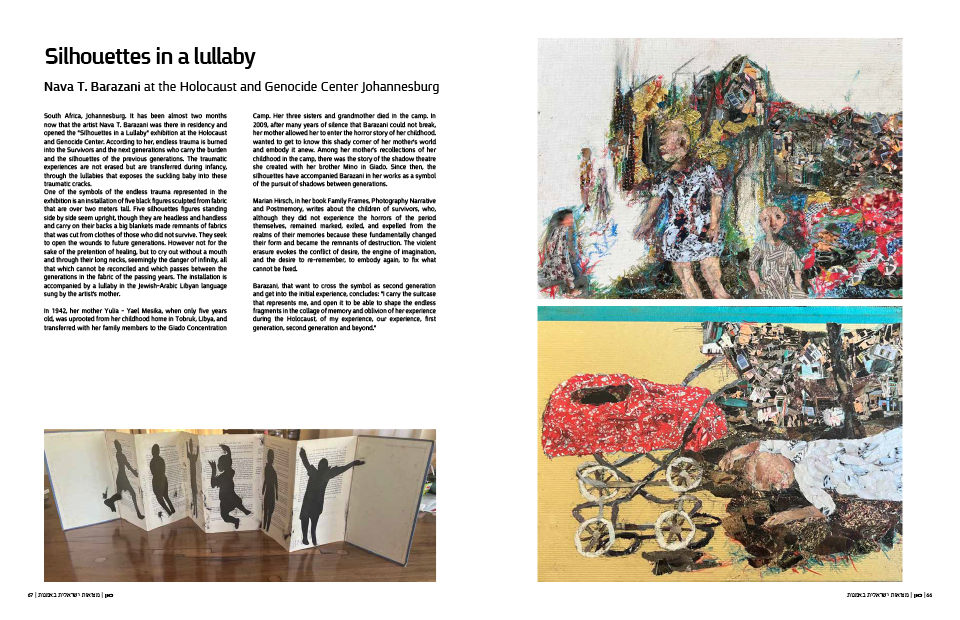
| Home Page | Editor Notices | Museums | Galleries | Publication | Donation | Contact Us |


 | |||||||||||||||
| |||||||||||||||


| |||||||||||||||
| Nava T. Barazani at the Holocaust and Genocide Center Johannesburg |
South Africa, Johannesburg. It has been almost two months now that the artist Nava T. Barazani was there in residency and opened the "Silhouettes in a Lullaby" exhibition at the Holocaust and Genocide Center. According to her, endless trauma is burned into the Survivors and the next generations who carry the burden and the silhouettes of the previous generations. The traumatic experiences are not erased but are transferred during infancy, through the lullabies that exposes the suckling baby into these traumatic cracks. One of the symbols of the endless trauma represented in the exhibition is an installation of five black figures sculpted from fabric that are over two meters tall. Five silhouettes figures standing side by side seem upright, though they are headless and handless and carry on their backs a big blankets made remnants of fabrics that was cut from clothes of those who did not survive. They seek to open the wounds to future generations. However not for the sake of the pretention of healing, but to cry out without a mouth and through their long necks, seemingly the danger of infinity, all that which cannot be reconciled and which passes between the generations in the fabric of the passing years. The installation is accompanied by a lullaby in the Jewish-Arabic Libyan language sung by the artist's mother. In 1942, her mother Yulia - Yael Mesika, when only five years old, was uprooted from her childhood home in Tobruk, Libya, and transferred with her family members to the Giado Concentration Camp. Her three sisters and grandmother died in the camp. In 2009, after many years of silence that Barazani could not break, her mother allowed her to enter the horror story of her childhood. wanted to get to know this shady corner of her mother's world and embody it anew. Among her mother's recollections of her childhood in the camp, there was the story of the shadow theatre she created with her brother Mino in Giado. Since then, the silhouettes have accompanied Barazani in her works as a symbol of the pursuit of shadows between generations. Marian Hirsch, in her book Family Frames, Photography Narrative and Postmemory, writes about the children of survivors, who, although they did not experience the horrors of the period themselves, remained marked, exiled, and expelled from the realms of their memories because these fundamentally changed their form and became the remnants of destruction. The violent erasure evokes the conflict of desire, the engine of imagination, and the desire to re-remember, to embody again, to fix what cannot be fixed. Barazani, that want to cross the symbol as second generation and get into the initial experience, concludes: "I carry the suitcase that represents me, and open it to be able to shape the endless fragments in the collage of memory and oblivion of her experience during the Holocaust, of my experience, our experience, first generation, second generation and beyond." Read more  |
| all rights reserved - CAN ISRAELI ART REALITY |
| סייבורג מחשבים - בניית אתרים |